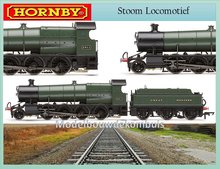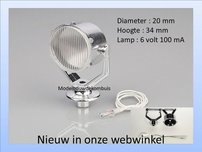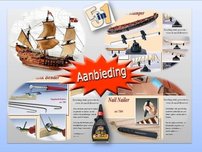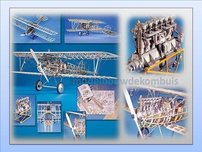| Er zijn geen producten in de winkelwagen. |

Aanmelden
- Hornby /
- Stoom Locomotieven /
-
GWR 2-8-0 2800 Class
Merk - Hornby
Lengte - 256 mm
DCC Type - DCC Ready
Livery - GWR
Class -2800
Disigner - G.J. Churchward
Entered Service - 1903
Detail - Extensive cab detail
Motor - 5 Pole Skew Wound. Loco Drive
Purpose - HeavyFreight/Mixed Trafic
Wheel Configuration - 2-8-0
Beschrijving:
Please note, the writing on the tender of this model reads 'Great Western', not 'GWR' as pictured.
Class 2800 was designed by George Jackson Churchward CBE, Chief Engineer with the Great Western Railway, specifically for heavy freight work, the first 2-8-0 Class in Great Britain.
Originally numbered as 'No. 97' the Class first appeared in 1903, and underwent two full years of trials. Following these trials the boiler pressure was raised from 200lbf/in2 to 225lbf/in2 and the 8 1/2" piston valves were increased to 10". The tender was also changed from the original 4,000 gallon to 3,500 imperial gallons which became more or less standard for the Class.
Full production began in 1905 and continued until 1919, during which time 84 locomotives were produced. A further batch was built between 1938 and 1942. These locomotives remained the principal long haul freight engines throughout the 1920s, 30s and beyond.
Over the years few modifications were made which included replacing the internal steam pipes with external ones, improving weight distribution, increasing the length of the smoke box and fitting larger diameter chimneys.
Due to coal shortages between 1945 and 1947 the government asked GWR to experiment with oil fired engines, and consequently eight of the Class were converted and re-classified as 4800. The experiment was abandoned in 1948 when the high cost of maintenance and imported oil became apparent.
The Class stood up well in trials against newer engines in the late 1940s and early 1950s, and it was not until the appearance in 1954 of the British Rail Standard Class 9F 2-10-0 that it was bettered as a mineral haulage locomotive.
British Railways began withdrawing the Class in 1958 however the Class continued in freight service until 1965, with sixty years of reliable service proving the excellence of Churchward's original design. All but six of the Class were scrapped, five of which are in various stages of preservation, the sixth is being used as a donor locomotive.
The locomotive represented here, No. 2811, was outshopped on the 30th November 1905 from the GWR Swindon Works. The locomotive was withdrawn after 54 years of service from Shed 82D, Westbury on the 31st October 1959 and was cut up by Round Oak Steelworks, Brierly Hill the following year on the 31st March 1960.




 Vergroot
Vergroot






